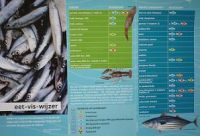Stemming the scarlet silvertide
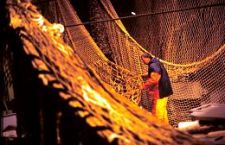
Once teeming with life, the oceans have turned into a slaughterhouse. Fish and smaller ocean life are overexploited to an irresponsible degree. Three quarters of the stocks are more or less overfished.
Politicians shun the necessary drastic measures. Green groups try to convince consumers to eat ‘sustainably caught’ fish only. But even they suffer from (partly deliberate) tunnel vision.
For instance, in their reluctance to estrange fishing communities, most established European environmentalist groups have neglected to use one of the most powerful arguments for no longer catching popular ‘seafood species’ like tuna and sharks: all of them are often heavily polluted. Culinary time bombs, so to speak…
Taking the hint from American websites like www.edf.org and Seafood Watch I have – together with the Belgian/Dutch Eos science magazine - developed a two page online pocket guide for Dutch language consumers, the Eet-vis-wijzer (Eat-fish-(ad)wiser), telling you both which fish are safe to eat and ‘sustainably caught’.
Photography: © Michel Robles
Check out the Eos article (in Dutch/Nederlands; © Michel Robles)...
Check out (from Februari 2011) the French Eos article (en Français; © Michel Robles/Eos)
Full story (and related stories © Michel Robles)...
Between guerrillas and gorillas
Sustainable solutions: saving nature while the bullets fly.
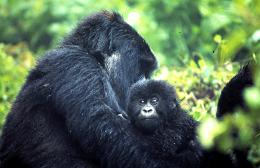
Ubwiyunge (reconciliation) is a war child, a mountain gorilla baby, born in the battle zone of the Virunga mountain range, where Rwanda, Uganda and Congo meet. National Parks can hardly protect the dozens of rare species in this area from the neverending ‘African World War’. But Park wardens and ‘green warrior’ NGO's are finding ways....
Over 130 Park rangers and several gorillas have been slaughtered, by rebel gangs and government troops alike.. It's the sad story of nature coming under fire in war zones all the world over. Sometimes it happens just by way of ‘collateral damage’. Sometimes natural habitats are targeted directly, because they are in the war mongers' way.
Paradoxically conflicts can protect valuable habitat too, keeping poachers, loggers and other destructive forces out. Whatever the circumstances, wildlife organizations, even the vulnerable local staff, are often among the few to stay on when the shit starts flying. They have devised clever combinations of splashy international PR and sensitive local expertise.
Most importantly, they’ve learned to be more than treehuggers. Social benefits of nature are often the key to necessary local support. Quite a green NGO's, therefore, have evolved into veritable developmental aid machines. Full story….
© Photo: Michel Robles
Too many butts, too many ifs…
(Latest update: June 2010)
Noone moves against a shocking 4.500 billion poisonous cigarette butts
 Unknown fact: flicking away your filter cigarette butt is poisoning the environment. Birds and marine life suffer. But who cares?
Unknown fact: flicking away your filter cigarette butt is poisoning the environment. Birds and marine life suffer. But who cares?
Filters are made of non-biodegradable plastic and stuffed to the brim with toxic chemicals. But neither politicians, nor the industry take action. Even environmentalists ignore the dirty little truth. Apart from smoking prohibitions and beach clean-ups, nothing is done.
The tobacco industry has halted earlier attempts to develop eco-friendly cigarettes. Scattered initiatives towards biodegradable filters lead an obscure existence. But something has begun to stir... Full story…
Photo: © Michel Robles
Series: The Lilywhite screen (Het groene doek)
(September 2010)
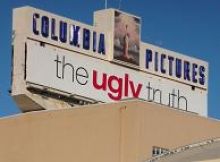 From Julia, Leonardo and George to Daryl, Matt and Rutger (Rutger who? You know: creep specialist Rutger Hauer), all the Hollywood celebs worth their salt support a green cause. But that doesn’t make the film industry itself green!
From Julia, Leonardo and George to Daryl, Matt and Rutger (Rutger who? You know: creep specialist Rutger Hauer), all the Hollywood celebs worth their salt support a green cause. But that doesn’t make the film industry itself green!
Human rights (mensenrechten), animal welfare (dierenwelzijn) and environment (milieu) - a real sustainable movie production set, is no easy thing. Michel Robles follows the industry on its way to a lilywhite conscience…. Introduction and related stories (Nederlands; English stories upcoming)….
Photo: © Michel Robles
Prime time green
… And in the wake of the Hollywood film industry, broadcasters too have woken up to the call for corporate social responsibility, or at least for the ‘planet’ part of the ‘people, planet, profit’ sustainability evangelium.
 Quietly at first, but this year more openly broadcasting channels are working on energy conserving and other green strategies. In this case, big Anglosaxon media serve as forerunners. But Dutch channels, among others, are catching up. In the Netherlands many public and commercial RTV channels have taken their first tentative steps in ecomanagement. And the leading international entertainment production house Endemol has moved to a sustainably designed new head quarters in Amsterdam. Read more….
Quietly at first, but this year more openly broadcasting channels are working on energy conserving and other green strategies. In this case, big Anglosaxon media serve as forerunners. But Dutch channels, among others, are catching up. In the Netherlands many public and commercial RTV channels have taken their first tentative steps in ecomanagement. And the leading international entertainment production house Endemol has moved to a sustainably designed new head quarters in Amsterdam. Read more….
Photo: © Michel Robles
Tasty nature managers
Big 'grazers' AND their meat
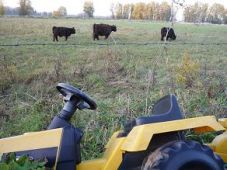 First they help us to ‘rewild’ our landscape, then they end up on our dish. An ever larger number of the horses and cattle that graze our nature areas are turned into ‘wilderness meat’ or ‘wildcattle meat’.
First they help us to ‘rewild’ our landscape, then they end up on our dish. An ever larger number of the horses and cattle that graze our nature areas are turned into ‘wilderness meat’ or ‘wildcattle meat’.
Good cash for their owners and top cooks praise the bite and taste. Nature managers call it a dignified end. But where does nature enhancement end and commercial farming begin? Full story (in Dutch)…
Photo: © Michel Robles
Related stories:
Eugenetic bio lawn razor
Jumbo op vakantiekamp
Sex in the City, but where?
Curse or economical asset? From Bangkok through Amsterdam to Rio, cities and smaller municipalities are pondering the proper place for red light enterprises within their confines. Some towns are experimenting with true spatial sex planning. Sustainable solutions come in many guises….
Almere is the youngest city of the Netherlands. Laid out in a polder close to Amsterdam, it is perfectly placed as a laboratory for social, green and spatial experiments. Like planning for sex. In Amsterdam and other towns the rise of the erotic industry has given the authorities a headache. The red bizz generates huge profits. Properly controlled and taxed, it could be an ecomomic driver and a prime source of income for the treasury. But stamping out criminal elements is a hell of a job.
New Dutch laws offer sex entrepreneurs a chance to become ‘decent’. After severe screening, they can get offcial permits. The books are controlled and they pay tax, like everyone else.
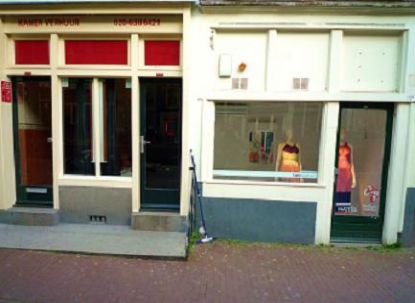 Amsterdam tries to pimp its red light district 'De Wallen'. Former pro's working windows have become fashion windows, filled with famous Dutch designers' creations.
Amsterdam tries to pimp its red light district 'De Wallen'. Former pro's working windows have become fashion windows, filled with famous Dutch designers' creations.
Almere, in order to cut the risks as much as possible, tries for wise spatial zoning. Suitable areas have been designated for different types of red bizz, e.g. clubs, sex shops and cinemas. Only the street and window prostitution have been taboo-ed.Full story (in Dutch, Nederlandse versie)…
© Photo: Michel Robles 2010
Nature by Jumbo
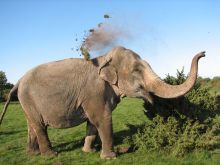 Looking for the most extreme ‘rewilding’ experiment? A bunch of Danish biologists have taken the lead, probably for a long time to come. They had elephants graze their heather.
Looking for the most extreme ‘rewilding’ experiment? A bunch of Danish biologists have taken the lead, probably for a long time to come. They had elephants graze their heather.
Biologists for some time have discussed reintroducing big grazing animals into nature areas, in order to recreate some of the characteristics of their original age-old ecosystems. The Dutch government and green groups were the moost daring pioneers for two decades. They had semi-wild Konik horses as well as a variety of unusual cattle (Galloways, Scottish highlanders, Wisent buffalo et cetera) and other animals graze big nature areas of different types.
But since 2008 the Danes, led by ecologist Morten Lindhard of the Røsnæs Nature School, have taken over! In a three day try-out they let some circus elephants graze the Vesterlyngen moors, in an effort to see if these far-off descendants of the mammoth could still find a useful place in European nature.
Although criticized by other experts, they still hope for a follow-up. And indeed in the U.S. colleagues are now considering similar experiments.
Read more (in Dutch, with link to Danish)….
Photo: © Jan Kunstman
Clubbers see the (LED) light
(last update: June 2010)
 Just about time: clubbing goes eco. Since 2007 four ‘sustainable’ disco’s have invaded night life in London, Rotterdam and LA. Ravin'pity that WATT in Rotterdam is down already. Still, elsewhere the green beat goes on...(Photo: SDC/WATT)
Just about time: clubbing goes eco. Since 2007 four ‘sustainable’ disco’s have invaded night life in London, Rotterdam and LA. Ravin'pity that WATT in Rotterdam is down already. Still, elsewhere the green beat goes on...(Photo: SDC/WATT)
First to open was Worm in Rotterdam, a movable cult rig, constructed on cradle-to-cradle principles of reuse. The experimental 2012 Architects bureau designed the interior, 90 percent of which has been assembled from some kind of waste.
More of a hightech image were the small club Surya in London and the big disco WATT, again in Rotterdam, and the Ecco Ultra Lounge nightclub, that opened its doors in 2008 in Hollywood, LA. Among their impressive array of eco-friendly characteristics, the most mediamatic are the “energy dance floors” in WATT and Surya. Through the movement energy of dancing boies such floors generate lighitng electricity.
Normal disco's consume tons of energy and water. WATT claimed a 30 percent reduction, compared to a conventional club. Quite hallucinating was WATT’s ‘pee experience’, created with a transparent pipe system for flushing the ladies’ restrooms with rain water from the green roof.
But there's a crisis on. Whereas Ecco in Los Angeles and Rotterdam's Worm are doing great, Surya in the outskirts of London is said to be struggling and WATT has filed a bankruptcy request this month. Ironically WATT stumbled over environmental legislation. The neighbours complained of noise. Due to dissapointing visitor numbers, WATT lacked the money for better sound insulation. The City saw no hopes in a rescue operation.
Yet, eco-friendly clubbing is headed for a flashy future, as ever more 'green' standard equipment for clubs and bars is being produced. Read more...
Dead on Track
Trains too, kill animals
Road traffic claims millions of animal victims each year. The track record of trains is less violent. Nevertheless, even railroads require so-called ‘defragmentation’ measures. For economical reasons, too.
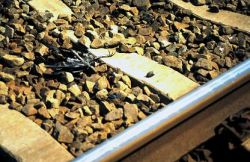 In the Netherlands, the sad ravages of road traffic add up to over 5 million animal victims each year. Railway traffic is less frequent. But still it takes a yearly toll of some 71.000 to 135.000 birds, deer, frogs, et cetera.
In the Netherlands, the sad ravages of road traffic add up to over 5 million animal victims each year. Railway traffic is less frequent. But still it takes a yearly toll of some 71.000 to 135.000 birds, deer, frogs, et cetera.
Officials do take action. India has set speed limits for trains in nature reserves. European countries as well as China try to reconcile human and animal traffic through eco-culverts and the like. Biologists call it “defragmentation”: reconnecting natural areas that have become separated by busy infrastructure.
The Dutch ’nature bridge’ Zanderij Crailo is Europe’s biggest railway spanning forested ‘ecoduct’. It traverses both a provincial highway and a complete rail emplacement, connecting two forest areas.
Photo: © Michel Robles
Plant your wall
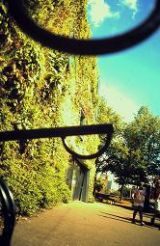 Vertical gardens are the new green fad
Vertical gardens are the new green fad
Rooftop gardens? Nice. But more spectacular are the new ‘vertical gardens’. Budding ‘hydroponics’ technology makes the ultimate green building a real possibility.
It all started with the French botanist and landscape architect Partick Blanc. Since 1988 he has created many “Mur Végétal” works of wall garden art, on office buildings and private homes, all over the world. What enabled him to do so, is ‘hydroponics’ (also called aquaponics), the technology of growing flowers and vegetables on non-soil substrates or in fluids.
By now several other systems exist for varying conditions, both in moderate and tropical climates, both outdoor and on interior walls. Shops, offices, homes and other buildings all over the world have been greened this way. And new systems keep emerging. Short story..
Photo: © Michel Robles
Martial Art
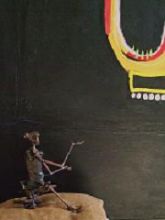
Once they were bullets, pistols or grenades. Now under the deft hands of Mozambique’s possibly most famous sculptor Goncalo Mabunda they have been transformed into Art.
Recycling AK-47's and other arms from the one-time civil war has become the trade mark of Mabunda and a couple of his fellow artists. I saw some of the results in a small B&B in Antwerp. But even the British Museum and the Bill Clinton Foundation acquired pieces from the 'Arms into Art' programme. Read more…
Photo: © Michel Robles
High on FSC
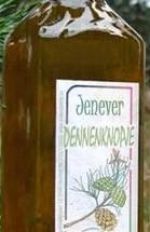
Ten years ago the Netherlands were an admired environmental pioneer nation. Nowadays, due to a shortsighted neoliberal policy we are almost tail-end Charley within the European Union. Belgium, on the other hand, is a real runner-up. Last December (2010) the Flemish Leukenheide distillery presented Dennenknopje (Pine Bud). Dennenknopje is the world’s very first jenever (traditionally a truly Dutch strong drink), made from a Forest Stewardship Council (FSC) labeled wood product. The gin-like softbooze is distilled from pine cones from the Pinus silvestris. The pines grow in Flanders’ vastest, FSC certified forest region Bosland. A local high from an okay forest. Innovation can be anywhere.…
Questioning Plastiki pride
The newly designed cradle-to-cradle catamaran Plastiki has recently arrived is Sidney after a publicity voyage from California across the Pacific Ocean. The designers claim extreme recyclability. But, contrary to earlier announcements, the ship will not be up-cycled now that it has reached its destination. The builders say they've become too attached to their newborn baby. Of course, the vessel can be a showcase for years to come. But, hey, isn't this kind of attachment of people to their achievements precisely the reason why our earth is becoming such a cluttered place? www.theplastiki.com
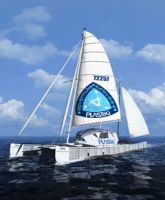
Sweet C2C
Cradle-to-cradle handmade beauty: go haunt the town's antique and recycle shops and flea markets for a bunch of elegant (or maybe you prefer funny or modern design) plates, saucers and wine glasses. Wash them well, sand the glasses' brims lightly and glue things together with strong porcelain glue. Any shape, size and design you fancy, will do.


Lo and behold: you have now created your own home grown bonbonnière! For sweets, cookies, fruit - or sandwiches if you like. Ladies love'em! Dozens were sold in a fashion shop in my home town. Enjoy more...
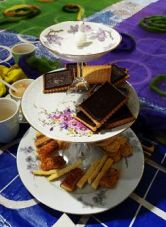
Photos: © Michel Robles
Links
Novio Design Webdesign

